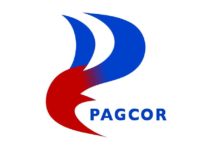
THE Bangko Sentral ng Pilipinas (BSP) said most banks maintained their credit standards in the third quarter of the year.
Results of the Senior Bank Loan Officers’ Survey (SLOS) released on Friday, October 25, showed that most respondent banks kept their credit standards generally unchanged for lending to businesses and consumers based on the modal approach.
The diffusion index (DI) method, on the other hand, reflected a net tightening of lending standards for loans to businesses and households.
The SLOS consists of questions on loan officers’ perceptions relating to the overall credit standards of their respective banks, as well as to factors affecting the supply of and demand for loans to both enterprises and households.
In the modal approach, the results of the survey are analyzed by looking at the option with the highest share of responses. The three options are tightening, easing, or unchanged credit standards for loans to enterprises and for loans to households.
In the DI approach, a positive DI for credit standards indicates that the proportion of respondent banks that have tightened their credit standards exceeds those that eased, whereas a negative DI for credit standards indicates that more respondent banks have eased their credit standards compared to those that tightened.
An unchanged credit standard in the DI approach indicates that the proportion of the respondent banks that have tightened their credit standards is equal to those that eased their credit standards.
Loans to enterprises
The BSP said in the third quarter, 80.4 percent of respondent banks maintained their lending standards for firms based on the modal approach, down from 87 percent in the second quarter.
The DI approach, meanwhile, showed a continued net tightening of credit standards due to the deterioration in borrowers’ profiles and the profitability of banks’ portfolios.
Over the next quarter, the modal approach showed that 90.2 percent of respondent banks anticipate maintaining their loan standards for businesses.
However, DI results showed a net tightening of credit standards for the fourth quarter due to the deterioration in borrowers’ profiles and the profitability and liquidity of banks’ portfolios, the perception of stricter financial system regulations, and reduced tolerance for risk.
Loans to household
Modal results showed that 80 percent of banks maintained their lending standards for household loans, down from the 84.2 percent the previous quarter.
The DI method, on the other hand, reflected a net tightening of overall credit standards, following unchanged loan standards in the previous quarter.
For the fourth quarter, the modal results showed that 82.9 percent of banks expect unchanged household loan standards. (PNA)



